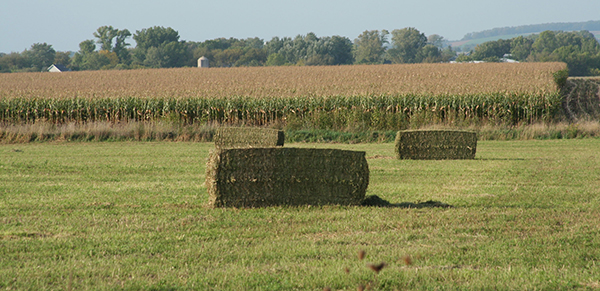
Alfalfa is a powerhouse when it comes to providing N credits to a subsequent crop, which is often corn. Most Midwest states suggest N credits ranging from over 150 pounds per acre down to 40 depending on stand condition and soil type. For the most part, these estimates are conservative. Still, there are many situations where N is overapplied to first- or second-year corn following alfalfa.
In recent years, researchers at the University of Minnesota have invested considerable effort to better define alfalfa N credits and identify those situations that impact the level of N contribution. Some of their results were outlined in the current edition of the Midwest Forage Association's Forage Focus magazine.
Initially, the researchers determined from 31 on-farm fertilizer response trials that corn following alfalfa rarely needs additional applied N to increase corn grain (or silage) yield. Only three of 31 fields were responsive to an additional N application. Moreover, response to N was poorly related to alfalfa plant density at stand termination.
To determine when first-year cornfields following alfalfa would be responsive to additional N fertilizer, the researchers combined data from 259 first-year corn trials from Minnesota and other states. They looked at variables such as soil texture, age of alfalfa stand, alfalfa termination timing, and weather conditions between termination and corn planting. All of these factors seemed to affect the level on N response in corn. Predictive equations were developed to determine economic N rates. They found that first-year corn rarely responds to any additional N except on:
- Sandy soils
- Fine-textured soils when there are prolonged wet, early-season conditions
- Medium-textured soils when following one-year-old direct-seeded alfalfa.
- Medium-textured soils when following two-year-old alfalfa (including the establishment year) seeded with a small grain companion crop
- Medium-textured soils when following spring-terminated alfalfa
The results of the analysis are currently being validated with on-farm research trials so that specific rate recommendations can be made.
Second-year corn
The researchers are also studying the alfalfa N-credit contributions to second-year corn. Using data from 28 on-farm trials in Iowa and Minnesota to determine economic optimum N rates, the researchers found that no N response occurred in 50 percent (14) of the trial fields. Once again, stand density did not relate well to the level of N credit. Currently, research is underway to further define and understand the factors impacting N credits on second-year corn.
Economic implications
If nothing else, this research confirms that current N credit guidelines are conservative for most situations in the Midwest. Though the researchers suggest following current state recommendations until more information is learned, there is clearly little need to apply additional manure or N fertilizer to first-year corn following alfalfa in most situations. Furthermore, there are additional N credits to capitalize on for second-year corn.

